A Case Study in How to Avoid Methodological Errors when
Evaluating Machine Learning Methods for Time Series Forecasting.
Evaluating machine learning models on time series forecasting problems is challenging.
It is easy to make a small error in the framing of a problem or in the evaluation of models that give impressive results but result in an invalid finding.
An interesting time series classification problem is predicting whether a subject’s eyes are open or closed based only on their brain wave data (EEG).
In this tutorial, you will discover the problem of predicting whether eyes are open or closed based on brain waves and a common methodological trap when evaluating time series forecasting models.
Working through this tutorial, you will have an idea of how to avoid common traps when evaluating machine learning algorithms on time series forecast problems. These are traps that catch both beginners, expert practitioners, and academics alike.
After completing this tutorial, you will know:
- The eye-state prediction problem and a standard machine learning dataset that you can use.
- How to reproduce skilful results for predicting eye-state from brainwaves in Python.
- How to uncover an interesting methodological flaw in evaluating forecast models.
Kick-start your project with my new book Deep Learning for Time Series Forecasting, including step-by-step tutorials and the Python source code files for all examples.
Let’s get started.
Tutorial Overview
This tutorial is divided into seven parts; they are:
- Predict Open/Closed Eyes from Brain Waves
- Data Visualization and Remove Outliers
- Develop the Predictive Model
- Problem with the Model Evaluation Methodology
- Train-Test Split with Temporal Ordering
- Walk-Forward Validation
- Takeaways and Key Lesson
Predict Open/Closed Eyes from Brain Waves
In this post, we are going to take a closer look at a problem that involves predicting whether the subjects eyes are open or closed based on brain wave data.
The problem was described and data collected by Oliver Rosler and David Suendermann for their 2013 paper titled “A First Step towards Eye State Prediction Using EEG“.
I saw this dataset and I had to know more.
Specifically, an electroencephalography (EEG) recording was made of a single person for 117 seconds (just under two minutes) while the subject opened and closed their eyes, which was recorded via a video camera. The open/closed state was then recorded against each time step in the EEG trace manually.
The EEG was recorded using a Emotiv EEG Neuroheadset, resulting in 14 traces.
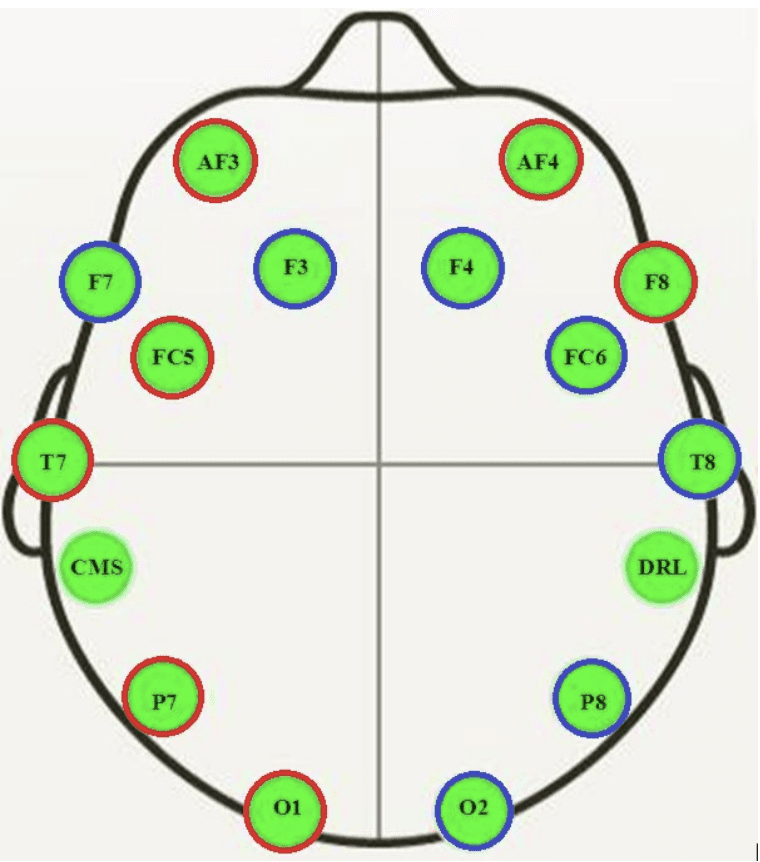
Cartoon of where EEG sensors were located on the subject
Taken from “A First Step towards Eye State Prediction Using EEG”, 2013.
The output variable is binary, meaning that this is a two-class classification problem.
A total of 14,980 observations (rows) were made over the 117 seconds, meaning that there were about 128 observations per second.
The corpus consists of 14,977 instances with 15 attributes each (14 attributes representing the values of the electrodes and the eye state). The instances are stored in the corpus in chronological order to be able to analyze temporal dependencies. 8,255 (55.12%) instances of the corpus correspond to the eye open and 6,722 (44.88%) instances to the eye closed state.
There were also some EEG observations that have a much larger than expected amplitude. These are likely outliers and can be identified and removed using a simple statistical method such as removing rows that have an observation 3-to-4 standard deviations from the mean.
The simplest framing of the problem is to predict the eye-state (open/closed) given the EEG trace at the current time step. More advanced framings of the problem may seek to model the multivariate time series of each EEG trace in order to predict the current eye state.
Need help with Deep Learning for Time Series?
Take my free 7-day email crash course now (with sample code).
Click to sign-up and also get a free PDF Ebook version of the course.
Data Visualization and Remove Outliers
The dataset can be downloaded for free from the UCI Machine Learning repository:
The raw data is in ARFF format (used in Weka), but can be converted to CSV by deleting the ARFF header.
Below is a sample of the first five lines of the data with the ARFF header removed.
|
1 2 3 4 5 6 |
4329.23,4009.23,4289.23,4148.21,4350.26,4586.15,4096.92,4641.03,4222.05,4238.46,4211.28,4280.51,4635.9,4393.85,0 4324.62,4004.62,4293.85,4148.72,4342.05,4586.67,4097.44,4638.97,4210.77,4226.67,4207.69,4279.49,4632.82,4384.1,0 4327.69,4006.67,4295.38,4156.41,4336.92,4583.59,4096.92,4630.26,4207.69,4222.05,4206.67,4282.05,4628.72,4389.23,0 4328.72,4011.79,4296.41,4155.9,4343.59,4582.56,4097.44,4630.77,4217.44,4235.38,4210.77,4287.69,4632.31,4396.41,0 4326.15,4011.79,4292.31,4151.28,4347.69,4586.67,4095.9,4627.69,4210.77,4244.1,4212.82,4288.21,4632.82,4398.46,0 ... |
We can load the data as a DataFrame and plot the time series for each EEG trace and the output variable (open/closed state).
The complete code example is listed below.
The example assumes that you have a copy of the dataset in CSV format with the filename ‘EEG_Eye_State.csv‘ in the same directory as the code.
|
1 2 3 4 5 6 7 8 9 10 11 12 13 |
# visualize dataset from pandas import read_csv from matplotlib import pyplot # load the dataset data = read_csv('EEG_Eye_State.csv', header=None) # retrieve data as numpy array values = data.values # create a subplot for each time series pyplot.figure() for i in range(values.shape[1]): pyplot.subplot(values.shape[1], 1, i+1) pyplot.plot(values[:, i]) pyplot.show() |
Running the example creates a line plot for each EEG trace and the output variable.
We can see the outliers washing out the data in each trace. We can also see the open/closed state of the eyes over time with 0/1 respectively.
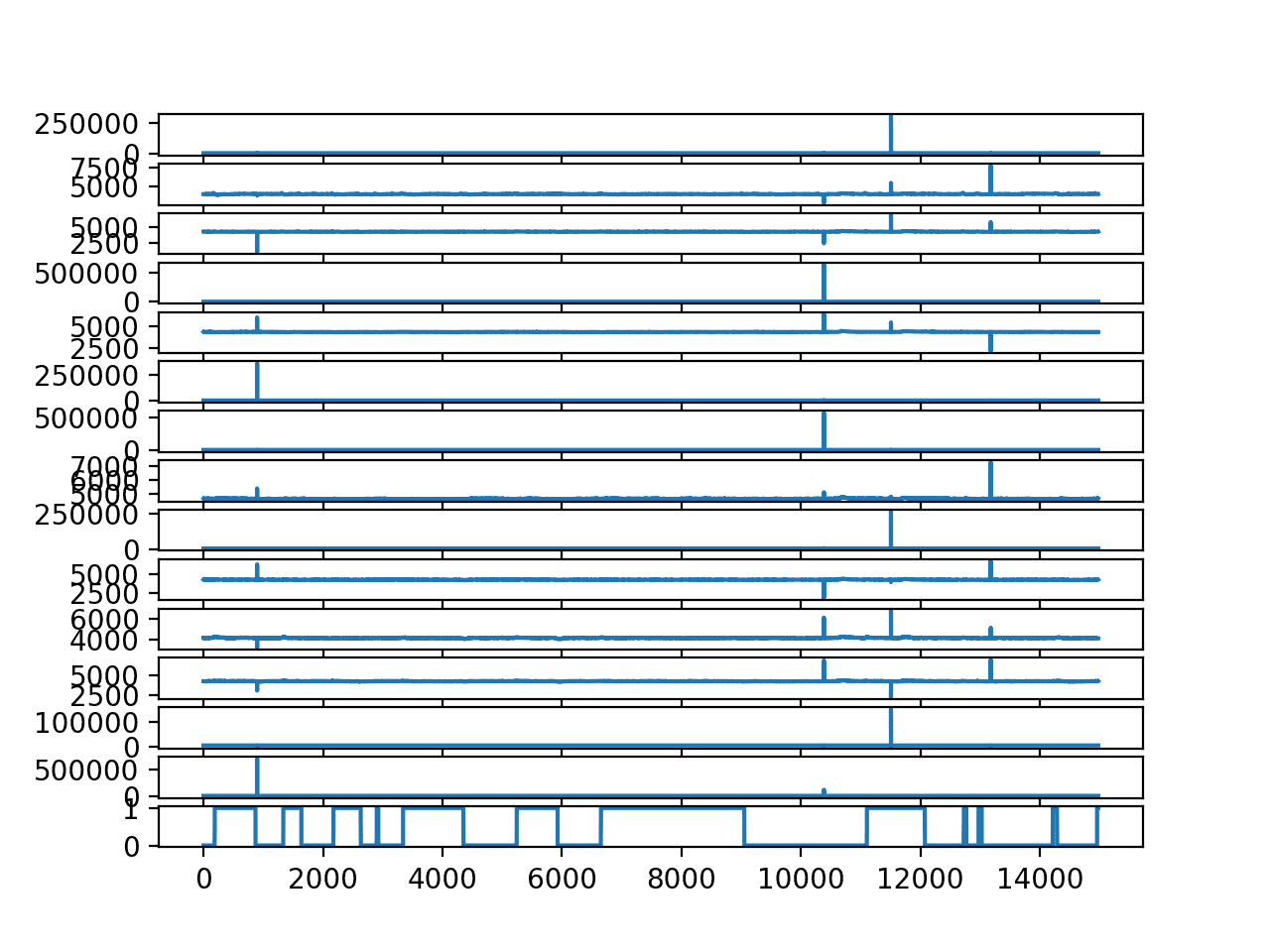
Line Plot for each EEG trace and the output variable
It is useful to remove the outliers to better understand the relationship between the EEG traces and the open/closed state of the eyes.
The example below removes all rows that have an EEG observation that is four standard deviations or more from the mean. The dataset is saved to a new file called ‘EEG_Eye_State_no_outliers.csv‘.
It is a quick and dirty implementation of outlier detection and removal, but gets the job done. I’m sure you could engineer a more efficient implementation.
|
1 2 3 4 5 6 7 8 9 10 11 12 13 14 15 16 17 18 19 20 21 22 23 24 25 26 |
# remove outliers from the EEG data from pandas import read_csv from numpy import mean from numpy import std from numpy import delete from numpy import savetxt # load the dataset. data = read_csv('EEG_Eye_State.csv', header=None) values = data.values # step over each EEG column for i in range(values.shape[1] - 1): # calculate column mean and standard deviation data_mean, data_std = mean(values[:,i]), std(values[:,i]) # define outlier bounds cut_off = data_std * 4 lower, upper = data_mean - cut_off, data_mean + cut_off # remove too small too_small = [j for j in range(values.shape[0]) if values[j,i] < lower] values = delete(values, too_small, 0) print('>deleted %d rows' % len(too_small)) # remove too large too_large = [j for j in range(values.shape[0]) if values[j,i] > upper] values = delete(values, too_large, 0) print('>deleted %d rows' % len(too_large)) # save the results to a new file savetxt('EEG_Eye_State_no_outliers.csv', values, delimiter=',') |
Running the example summarizes the rows deleted as each column in the EEG data is processed for outliers above and below the mean.
|
1 2 3 4 5 6 7 8 9 10 11 12 13 14 15 16 17 18 19 20 21 22 23 24 25 26 27 28 |
>deleted 0 rows >deleted 1 rows >deleted 2 rows >deleted 1 rows >deleted 0 rows >deleted 142 rows >deleted 0 rows >deleted 48 rows >deleted 0 rows >deleted 153 rows >deleted 0 rows >deleted 43 rows >deleted 0 rows >deleted 0 rows >deleted 0 rows >deleted 15 rows >deleted 0 rows >deleted 5 rows >deleted 10 rows >deleted 0 rows >deleted 21 rows >deleted 53 rows >deleted 0 rows >deleted 12 rows >deleted 58 rows >deleted 53 rows >deleted 0 rows >deleted 59 rows |
We can now visualize the data without outliers by loading the new ‘EEG_Eye_State_no_outliers.csv‘ file.
|
1 2 3 4 5 6 7 8 9 10 11 12 13 |
# visualize dataset without outliers from pandas import read_csv from matplotlib import pyplot # load the dataset data = read_csv('EEG_Eye_State_no_outliers.csv', header=None) # retrieve data as numpy array values = data.values # create a subplot for each time series pyplot.figure() for i in range(values.shape[1]): pyplot.subplot(values.shape[1], 1, i+1) pyplot.plot(values[:, i]) pyplot.show() |
Running the example creates a better plot, clearly showing little positive peaks when eyes are closed (1) and negative peaks when eyes are open (0).
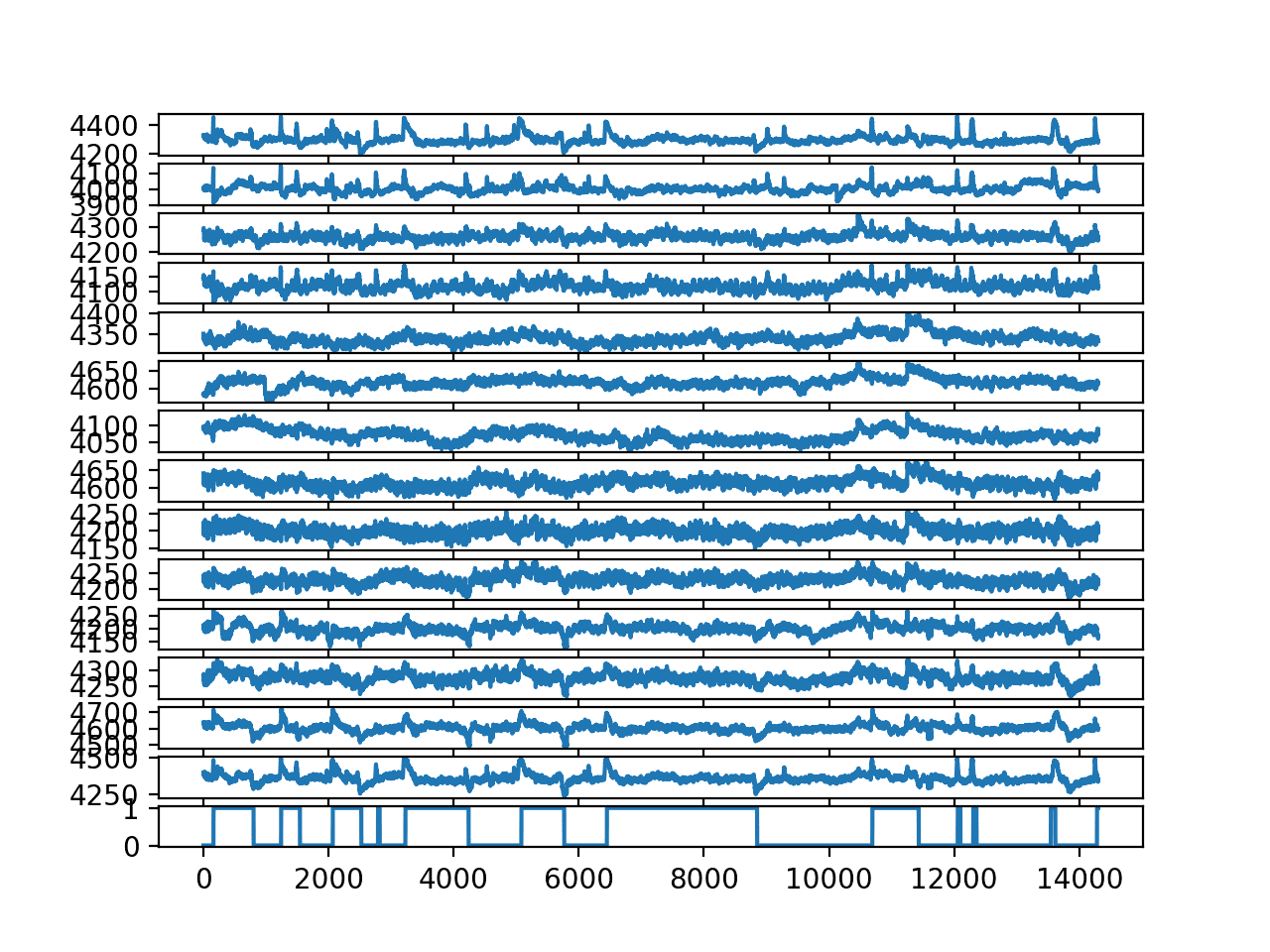
Line Plot for each EEG trace and the output variable without outliers
Develop the Predictive Model
The simplest predictive model is to predict the eye open/closed state based on the current EEG observation, ignoring the trace information.
Intuitively, one would not expect this to be effective, nevertheless, it was the approach used in Rosler and Suendermann’s 2013 paper.
Specifically, they evaluated a large suite of classification algorithms in the Weka software using 10-fold cross-validation of this framing of the problem. They achieved better than 90% accuracy with multiple methods, including instance based methods such as k-nearest neighbors and KStar.
However, instance-based learners such as IB1 and KStar outperformed decision trees yet again substantially. The latter achieved the clearly best performance with a classification error rate of merely 3.2%.
— A First Step towards Eye State Prediction Using EEG, 2013.
A similar methodology and finding was used with the same and similar datasets in a number of other papers.
I was surprised when I read this and so reproduced the result.
The complete example is listed below with a k=3 KNN.
|
1 2 3 4 5 6 7 8 9 10 11 12 13 14 15 16 17 18 19 20 21 22 23 24 25 26 27 28 29 |
# knn for predicting eye state from pandas import read_csv from sklearn.metrics import accuracy_score from sklearn.model_selection import KFold from sklearn.neighbors import KNeighborsClassifier from numpy import mean # load the dataset data = read_csv('EEG_Eye_State_no_outliers.csv', header=None) values = data.values # evaluate knn using 10-fold cross-validation scores = list() kfold = KFold(10, shuffle=True, random_state=1) for train_ix, test_ix in kfold.split(values): # define train/test X/y trainX, trainy = values[train_ix, :-1], values[train_ix, -1] testX, testy = values[test_ix, :-1], values[test_ix, -1] # define model model = KNeighborsClassifier(n_neighbors=3) # fit model on train set model.fit(trainX, trainy) # forecast test set yhat = model.predict(testX) # evaluate predictions score = accuracy_score(testy, yhat) # store scores.append(score) print('>%.3f' % score) # calculate mean score across each run print('Final Score: %.3f' % (mean(scores))) |
Note: Your results may vary given the stochastic nature of the algorithm or evaluation procedure, or differences in numerical precision. Consider running the example a few times and compare the average outcome.
Running the example prints the score for each fold of the cross validation and the mean score of 97% averaged across all 10 folds.
|
1 2 3 4 5 6 7 8 9 10 11 |
>0.970 >0.975 >0.978 >0.977 >0.973 >0.979 >0.978 >0.976 >0.974 >0.969 Final Score: 0.975 |
Very impressive!
But something felt wrong.
I was interested to see how models that took into account the clear peaks in the data at each transition from open-to-closed and closed-to-open performed.
Every model I tried using my own test harness that respected the temporal ordering of the data performed much worse.
Why?
Hint: think about the chosen model evaluation strategy and the type of algorithm that performed the best.
Problem with the Model Evaluation Methodology
Disclaimer: I am not calling out the authors of the paper or related papers. I don’t care. In my experience, most published papers cannot be reproduced or have major methodological flaws (including a lot of the stuff that I have written). I’m only interested in learning and teaching.
There is a methodological flaw in the way that time series models are evaluated.
I coach against this flaw, but after reading the paper and reproducing the result, it still tripped me up.
I hope by working through this example that it will help not trip you up on your own forecast problems.
The methodological flaw in the evaluation of the models is the use of k-fold cross-validation. Specifically, the evaluation of the models in a way that does not respect the temporal ordering of the observations.
Key to this problem is the finding of instance-based methods, such as k-nearest neighbors, as being skillful on the problem. KNN will seek out the k most similar rows in the dataset and calculate the mode of the output state as the prediction.
By not respecting the temporal order of instances when evaluating models, it allows the models to use information from the future in making the prediction. This is pronounced specifically in the KNN algorithm.
Because of the high frequency of observations (128 per second), the most similar rows will be those adjacent in time to the instance being predicted, both in the past and in the future.
We can make this clearer with some small experiments.
Train-Test Split with Temporal Ordering
The first test we can do is to evaluate the skill of a KNN model with a train/test split both when the dataset is shuffled, and when it is not.
In the case when the data is shuffled prior to the split, we expect the result to be similar to the cross-validation result in the previous section, specifically if the test set is 10% of the dataset.
If the theory about the importance of temporal ordering and instance-based methods using adjacent examples in the future is true, we would expect the test where the dataset is not shuffled prior to the split to be worse.
First, the example below splits the dataset into train/test split with 90%/10% of the data respectively. The dataset is shuffled prior to the split.
|
1 2 3 4 5 6 7 8 9 10 11 12 13 14 15 16 17 18 19 20 21 |
# knn for predicting eye state from pandas import read_csv from sklearn.metrics import accuracy_score from sklearn.model_selection import train_test_split from sklearn.neighbors import KNeighborsClassifier # load the dataset data = read_csv('EEG_Eye_State_no_outliers.csv', header=None) values = data.values # split data into inputs and outputs X, y = values[:, :-1], values[:, -1] # split the dataset trainX, testX, trainy, testy = train_test_split(X, y, test_size=0.1, shuffle=True, random_state=1) # define model model = KNeighborsClassifier(n_neighbors=3) # fit model on train set model.fit(trainX, trainy) # forecast test set yhat = model.predict(testX) # evaluate predictions score = accuracy_score(testy, yhat) print(score) |
Note: Your results may vary given the stochastic nature of the algorithm or evaluation procedure, or differences in numerical precision. Consider running the example a few times and compare the average outcome.
Running the example, we can see that indeed, the skill matches what we see in the cross-validation example, or close to it, at 96% accuracy.
|
1 |
0.9699510831586303 |
Next, we repeat the experiment without shuffling the dataset prior to the split.
This means that the training data are the first 90% of the data respecting the temporal ordering of the observations, and the test dataset is the last 10%, or about 1,400 observations of the data.
|
1 2 3 4 5 6 7 8 9 10 11 12 13 14 15 16 17 18 19 20 21 |
# knn for predicting eye state from pandas import read_csv from sklearn.metrics import accuracy_score from sklearn.model_selection import train_test_split from sklearn.neighbors import KNeighborsClassifier # load the dataset data = read_csv('EEG_Eye_State_no_outliers.csv', header=None) values = data.values # split data into inputs and outputs X, y = values[:, :-1], values[:, -1] # split the dataset trainX, testX, trainy, testy = train_test_split(X, y, test_size=0.1, shuffle=False, random_state=1) # define model model = KNeighborsClassifier(n_neighbors=3) # fit model on train set model.fit(trainX, trainy) # forecast test set yhat = model.predict(testX) # evaluate predictions score = accuracy_score(testy, yhat) print(score) |
Note: Your results may vary given the stochastic nature of the algorithm or evaluation procedure, or differences in numerical precision. Consider running the example a few times and compare the average outcome.
Running the example shows model skill that is much worse at 52%.
|
1 |
0.5269042627533194 |
This is a good start, but not definitive.
It is possible that the last 10% of the dataset is hard to predict, given the very short open/close intervals we can see on the plot of the outcome variable.
We can repeat the experiment and use the first 10% of the data in time for test and the last 90% for train. We can do this by reversing the order of the rows prior to splitting the data using the flip() function.
|
1 2 3 4 5 6 7 8 9 10 11 12 13 14 15 16 17 18 19 20 21 22 23 24 |
# knn for predicting eye state from pandas import read_csv from sklearn.metrics import accuracy_score from sklearn.model_selection import train_test_split from sklearn.neighbors import KNeighborsClassifier from numpy import flip # load the dataset data = read_csv('EEG_Eye_State_no_outliers.csv', header=None) values = data.values # reverse order of rows values = flip(values, 0) # split data into inputs and outputs X, y = values[:, :-1], values[:, -1] # split the dataset trainX, testX, trainy, testy = train_test_split(X, y, test_size=0.1, shuffle=False, random_state=1) # define model model = KNeighborsClassifier(n_neighbors=3) # fit model on train set model.fit(trainX, trainy) # forecast test set yhat = model.predict(testX) # evaluate predictions score = accuracy_score(testy, yhat) print(score) |
Note: Your results may vary given the stochastic nature of the algorithm or evaluation procedure, or differences in numerical precision. Consider running the example a few times and compare the average outcome.
Running the experiment produces similar results at about 52% accuracy.
This gives more evidence that it is not the specific contiguous block of observations that results in the poor model skill.
|
1 |
0.5290006988120196 |
It looks like immediately adjacent observations are required to make good predictions.
Walk-Forward Validation
It is possible that the model requires the adjacent observations in the past (but not the future) in order to make skillful predictions.
This sounds reasonable at first, but also has a problem.
Nevertheless we can achieve this using walk-forward validation over the test set. This is where the model is permitted to use all observations prior to the time step being predicted as we validate a new model at each new time step in the test dataset.
For more on walk-forward validation, see the post:
The example below evaluates the skill of KNN using walk-forward validation over the last 10% of the dataset (about 10 seconds), respecting temporal ordering.
|
1 2 3 4 5 6 7 8 9 10 11 12 13 14 15 16 17 18 19 20 21 22 23 24 25 26 27 28 29 30 31 |
# knn for predicting eye state from pandas import read_csv from sklearn.metrics import accuracy_score from sklearn.model_selection import train_test_split from sklearn.neighbors import KNeighborsClassifier from numpy import array # load the dataset data = read_csv('EEG_Eye_State_no_outliers.csv', header=None) values = data.values # split data into inputs and outputs X, y = values[:, :-1], values[:, -1] # split the dataset trainX, testX, trainy, testy = train_test_split(X, y, test_size=0.1, shuffle=False, random_state=1) # walk-forward validation historyX, historyy = [x for x in trainX], [x for x in trainy] predictions = list() for i in range(len(testy)): # define model model = KNeighborsClassifier(n_neighbors=3) # fit model on train set model.fit(array(historyX), array(historyy)) # forecast the next time step yhat = model.predict([testX[i, :]])[0] # store prediction predictions.append(yhat) # add real observation to history historyX.append(testX[i, :]) historyy.append(testy[i]) # evaluate predictions score = accuracy_score(testy, predictions) print(score) |
Note: Your results may vary given the stochastic nature of the algorithm or evaluation procedure, or differences in numerical precision. Consider running the example a few times and compare the average outcome.
Running the example gives an impressive model skill at about 95% accuracy.
|
1 |
0.9531795946890287 |
We can push this test further and only make the previous 10 observations available to the model when making a prediction.
The complete example is listed below.
|
1 2 3 4 5 6 7 8 9 10 11 12 13 14 15 16 17 18 19 20 21 22 23 24 25 26 27 28 29 30 31 32 |
# knn for predicting eye state from pandas import read_csv from sklearn.metrics import accuracy_score from sklearn.model_selection import train_test_split from sklearn.neighbors import KNeighborsClassifier from numpy import array # load the dataset data = read_csv('EEG_Eye_State_no_outliers.csv', header=None) values = data.values # split data into inputs and outputs X, y = values[:, :-1], values[:, -1] # split the dataset trainX, testX, trainy, testy = train_test_split(X, y, test_size=0.1, shuffle=False, random_state=1) # walk-forward validation historyX, historyy = [x for x in trainX], [x for x in trainy] predictions = list() for i in range(len(testy)): # define model model = KNeighborsClassifier(n_neighbors=3) # fit model on a small subset of the train set tmpX, tmpy = array(historyX)[-10:,:], array(historyy)[-10:] model.fit(tmpX, tmpy) # forecast the next time step yhat = model.predict([testX[i, :]])[0] # store prediction predictions.append(yhat) # add real observation to history historyX.append(testX[i, :]) historyy.append(testy[i]) # evaluate predictions score = accuracy_score(testy, predictions) print(score) |
Note: Your results may vary given the stochastic nature of the algorithm or evaluation procedure, or differences in numerical precision. Consider running the example a few times and compare the average outcome.
Running the example results in a further improved model skill of nearly 99% accuracy.
I would expect that the only errors being made are those at the inflection points in the EEG series when the trace transitions from open-to-closed or closed-to-open, the actual hard part of the problem. This aspect requires further investigation.
|
1 |
0.9923130677847659 |
Indeed, we have confirmed that the model requires adjacent observations and their outcome in order to make a prediction, and that it can do very well with only adjacent observations in the past, not the future.
This is interesting. But this finding is not useful in practice.
If this model was deployed, it would require the model to know the eye open/closed state in the very recent past, such as the previous 128th of a second.
This will not be available.
The whole idea of a model for predicting eye state based on brain waves is to have it operate without such confirmation.
Takeaways and Key Lesson
Let’s review what we have learned so far:
1. The model evaluation methodology must take the temporal ordering of observations into account.
This means that it is methodologically invalid to use k-fold cross-validation that does not stratify by time (e.g. shuffles or uses a random selection of rows).
This also means that it is methodologically invalid to use a train/test split that shuffles the data prior to splitting.
We saw this in the evaluation of the high skill of the model with k-fold cross-validation and shuffled train/test split compared to the low skill of the model when directly adjacent observations in time were not available at prediction time.
2. The model evaluation methodology must make sense for the use of the final model.
This means that even if you use a methodology that respects the temporal ordering of the observations, the model should only have information available that it would have if the model were being used in practice.
We saw this in the high skill of the model under a walk-forward validation methodology that respected the order of observations, but made information available, such as eye-state, that would not be available if the model were being used in practice.
The key is to start with a framing of the problem based in the use of the final model and work backwards to the data that would be available and a methodology for evaluating the model in its framing that only operates under information that would be available in that framing.
This applies doubly when you are trying to understand other people’s work.
Going Forward
Hopefully, this helps, both when you are evaluating your own forecast models and when you are evaluating the models of others.
So, how would you work this problem if presented with the raw data?
I think the keys to this problem are the positive/negative peaks that are obvious in the EEG data at the times when there is a transition from eyes open-to-closed or closed-to-open. I would expect an effective model would exploit this feature, perhaps using half a second or similar of prior EEG observations.
This might even be possible with a single trace, rather than 15, and a simple peak detection method from signal processing, rather than a machine learning method.
Let me know if you have a go at this; I’d love to see what you discover.
Further Reading
This section provides more resources on the topic if you are looking to go deeper.
- EEG Eye State Data Set, UCI Machine Learning Repository
- A First Step towards Eye State Prediction Using EEG, 2013.
- EEG Eye State Identification Using Incremental Attribute Learning with Time-Series Classification, 2014.
Summary
In this tutorial, you discovered the problem of predicting whether eyes are open or closed based on brain waves and a common methodological trap when evaluating time series forecasting models.
Specifically, you learned:
- The eye-state prediction problem and a standard machine learning dataset that you can use.
- How to reproduce skilful results for predicting eye-state from brainwaves in Python.
- How to uncover an interesting methodological flaw in evaluating forecast models.
Do you have any questions?
Ask your questions in the comments below and I will do my best to answer.

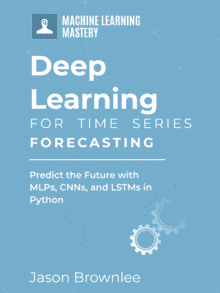
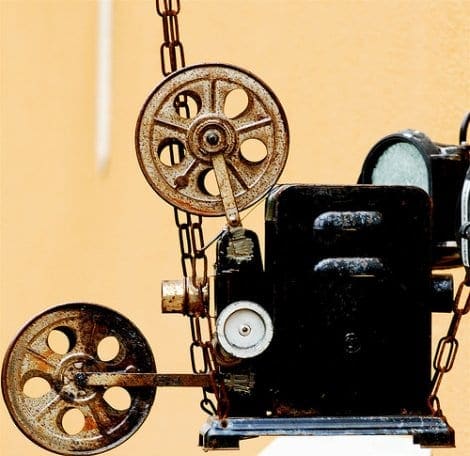
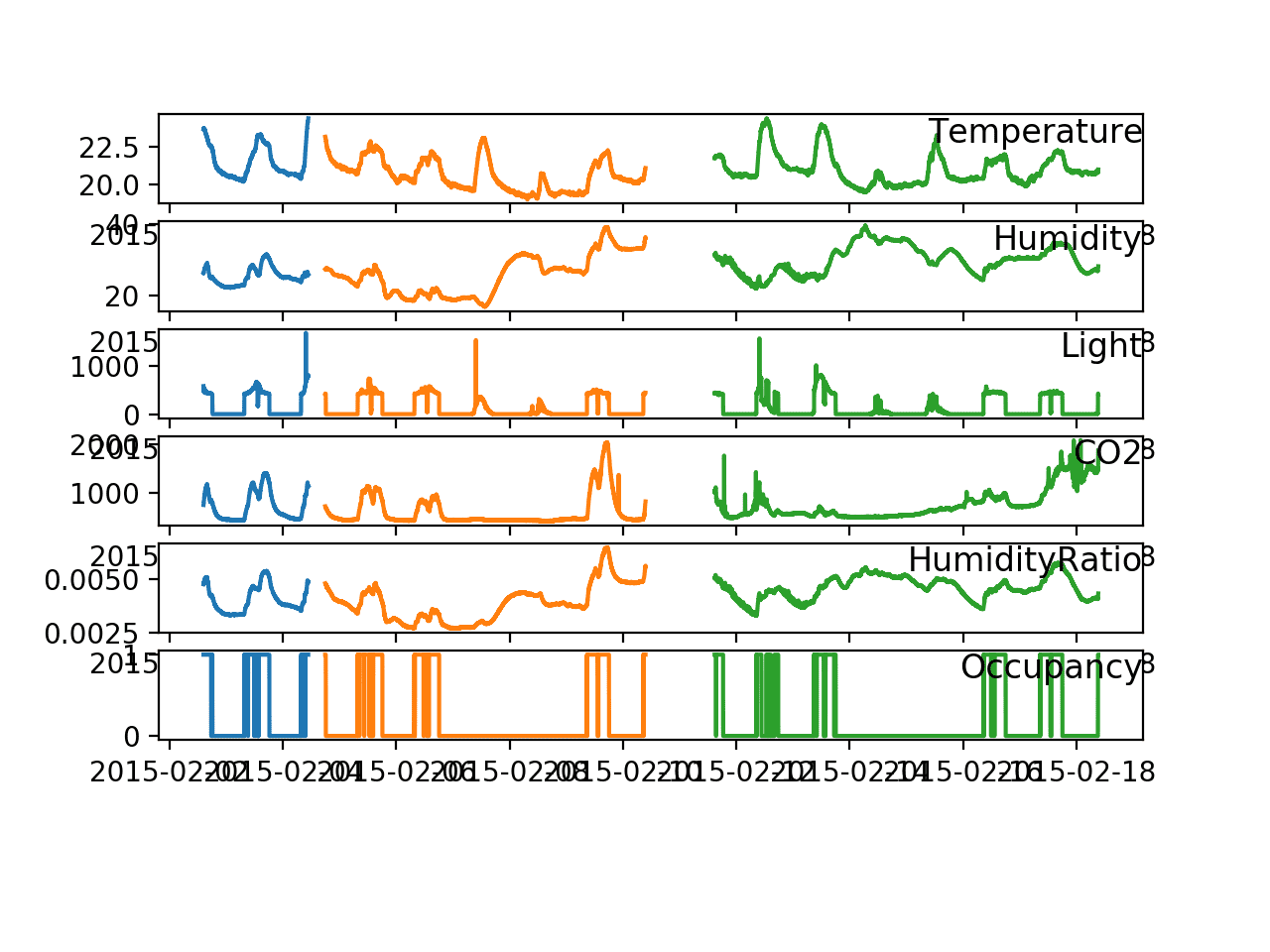
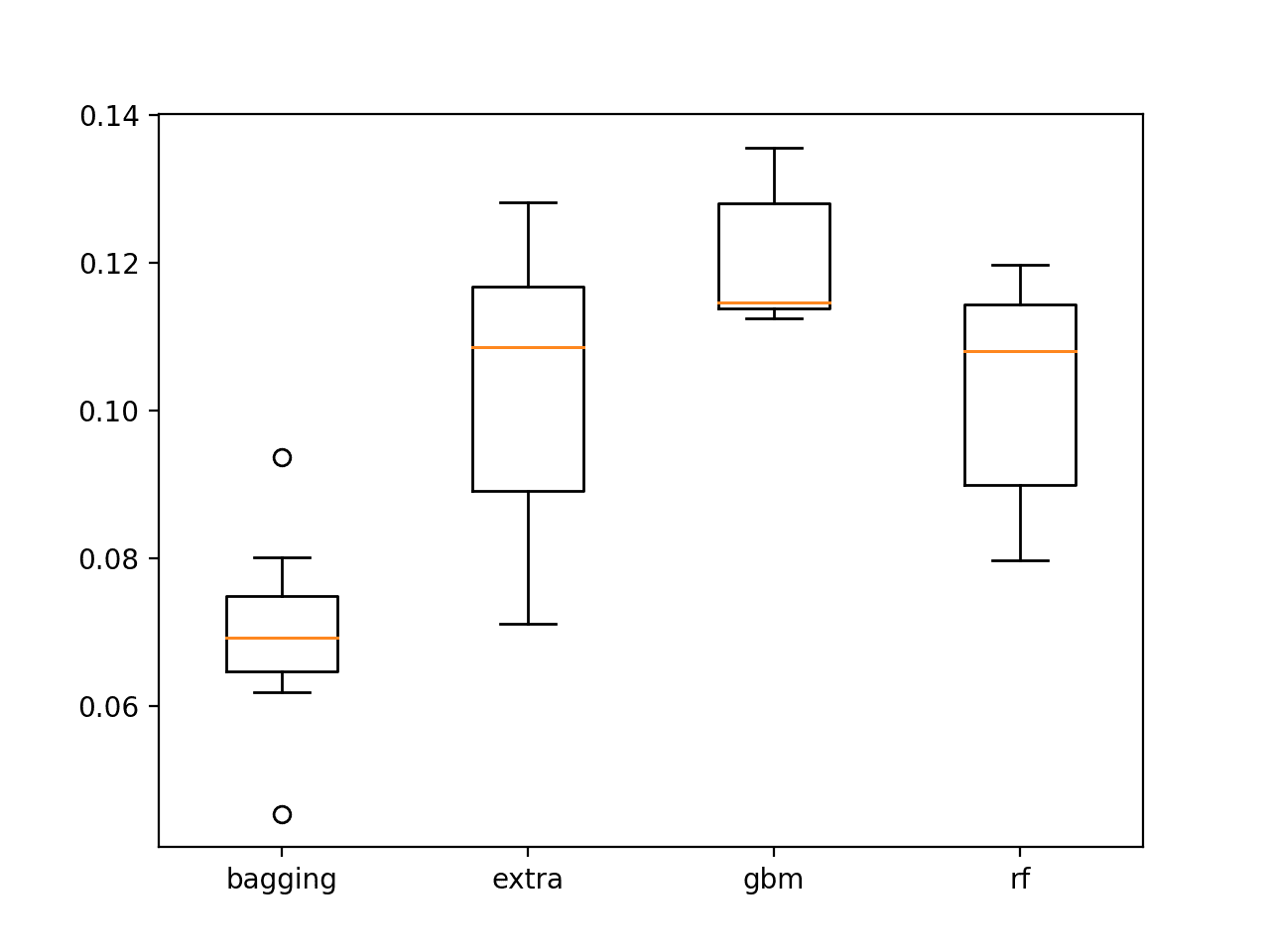
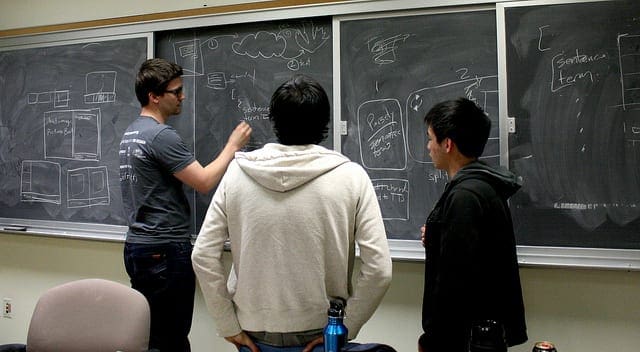

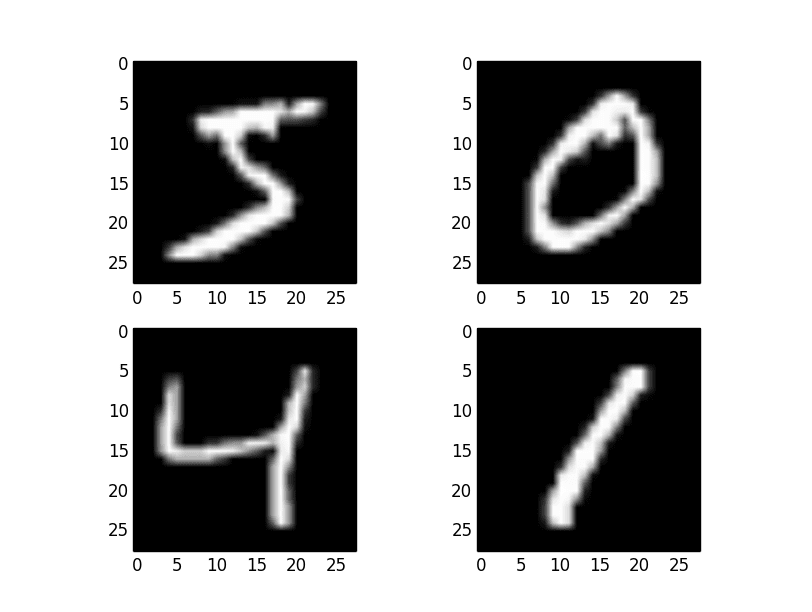
Hi Jason,
Thank you for this nice case study!
I hope you’ll be tackling more nuanced cases in the future.
Best,
Elie
Thanks.
I may be looking at this wrong, but in the example where you have above 99% accuracy and looking at past eye state, isn’t your model just learning that the current state is most likely the past state as the frequency of open and closing the eye is very slow.
Yes, I believe so.
It was more about the dangers of not thinking through methodology.
Thanks! Great article!
Thanks Tony.
Fantastic article about machine learning and evaluation pitfalls!!!
Please,give us more analysis like this,where we can learn from mistakes.
Thanks. Happy it helped.
Did you try using time series forecasting on stock market?hope to learn more on the financial topic!
I try to avoid finance applications, there’s too much emotion around the topic.
In your data cleaning, you should probably use standard deviations from the median, since deviations from mean will inherently be biased because outliers will shift the mean. It probably won’t make much of a difference, but I used this code:
filtered = data[data.apply(lambda x: np.abs(x - x.median()) / x.std() < 4).all(axis=1)]
I used a 2 layer stateful LSTM and got 99%, probably because of overfitting (it predicts a constant output). Someone better than me at LSTMs could probably troubleshoot my approach.
It would be good if there was more data.
My code is here: https://gist.github.com/JonnoFTW/f94f8d97e57f6796da83b834ce66aa45
Very nice Jonathan!
Amazing work.
Thanks.
Hello Jason,
Can you please clear my doubts in understanding this below line ?
“A total of 14,980 observations (rows) were made over the 117 seconds, meaning that there were about 128 observations per second.”
How come in one second 128 observations be made ? what does single observation mean?
I intepret one observation as eye being closed or opened by a single person using those 14 (input atrributes) EEG sensors right?
so 117 second means,shoudnt we have 117 observations each second from a single person.?
One observation is one measurement of brain waves.
14980/117 = about 128.03 observations in each second.
As always great! THank you Jason. Do you have any idea for variable size cases?
Perhaps this will help:
https://machinelearningmastery.com/data-preparation-variable-length-input-sequences-sequence-prediction/
Hi,
I am getting the below error
yhat = model.predict(test_inputs_tf)
102
–> 103 score = accuracy_score(test_output_tf, yhat,normalize=False)
104
105
/usr/local/lib/python2.7/dist-packages/sklearn/metrics/classification.pyc in accuracy_score(y_true, y_pred, normalize, sample_weight)
174
175 # Compute accuracy for each possible representation
–> 176 y_type, y_true, y_pred = _check_targets(y_true, y_pred)
177 if y_type.startswith(‘multilabel’):
178 differing_labels = count_nonzero(y_true – y_pred, axis=1)
/usr/local/lib/python2.7/dist-packages/sklearn/metrics/classification.pyc in _check_targets(y_true, y_pred)
86 # No metrics support “multiclass-multioutput” format
87 if (y_type not in [“binary”, “multiclass”, “multilabel-indicator”]):
—> 88 raise ValueError(“{0} is not supported”.format(y_type))
89
90 if y_type in [“binary”, “multiclass”]:
ValueError: unknown is not supported
where test_output_tf is my testy. Any suggestions to resolve this?
That is surprising, I have some suggestions here:
https://machinelearningmastery.com/faq/single-faq/why-does-the-code-in-the-tutorial-not-work-for-me
Hola Jason:
Great tutorial. Thank you for the job!.
Here are my comments, if useful for anyone:
1) I like this tutorial of analyzing 14 EEG signals (even if they are analogical (we must sample before ) and get some output fact (eyes open or close): Because I think there are plenty of problems of recoding many signals associated to an status label (e.g. health care) that can benefit of this time series approach
2) In the process of removing outliers from original csv file, I used “numpy.where ()” function (if value is higher or lower than certain upper or lower signal value for row outliers identification). I clean 676 rows. I think it is faster than using “for in …loops”
3) I am surprised by the use of reversibility prediction when you predict future values of test in time from previous training data (normal situation), and when you do the reverse predicting previous time values (test) from future training values. Exactly at the moment of your tutorial when you use the “numpy.flip” function to reverse row timely order.
It is hard to me accept it because of multiple physics phenomena as Entropy irreversibility, different causes for same effect, etc. I am glad to here we can do that, but still I feel a little “unconfident”
4) this is the first time, after some tutorials that I understand clearly the “walk-forward validation” (I thin this strange term come from financial analysis) in terms of updating training set by the new test data, each time you make a new prediction. It is very impressive how it is improved the scores !.
5) regarding the real open-close eyes DATASET EEG traces, when signal change abruptly (sharply) is when you eyes change the status so if you know previous status (labels), I guess it is as simple as change the label status for new test forward prediction.
and of course thank for sharing your comments about how this original paper make some mistake about training with shuffle that introduce future data on input previous training data, invalidating and faking the results …And of course I share your job targets in the sense of “…learning and teaching”, very honest from your side!
Thanks, much appreciated.
Insightful comments and feedback as always!
amazing work …great ..so I hope to give us information or material about protein function prediction using PPIN
Thanks for the suggestion.
Hi jason Brownlee
Superb explanation.
Great.
Case 1: In the case of cross-fold validation, we have ten (10) models
Case 2: In the case of Train Test split, we have one model.
Case 3: Here, in this work (i.e., Train Test split with walk-forward validation), we have “len(testy)” (i.e., 1431) models.
All these cases “walk-forward validation” provides the best performance.
Here my doubt is: Except train test split (in case 2) remaining all cases (i.e., in case 1 and 2) has more than one model.
Among these models which model is best to save for further operation.
Means the best model for placing in embedded systems to use in predicting other data.
We are testing the model construction process, rather than any given model.
If you want a single model, then you must construct a test harness to evaluate exactly that.
great article, when i check classification report of model with 99% accuracy, i can see only one class, its not showing the other class
Sorry, I don’t know what changes you might have made to the example.
Given that the data is highly imbalanced, I expect the clarification report might not be appropriate.
Hi, I’m working with this database, can you help me with input shape for 1D CNN? I don’t know how to change this database, exactly I’dont know what I have to change.
I don’t recommend using this dataset, perhaps check the final section of the article.
Nevertheless, this tutorial will show you how to work with a 1D cnn for time series:
https://machinelearningmastery.com/how-to-develop-convolutional-neural-network-models-for-time-series-forecasting/
Great article,
Want to know some possible future work regarding
Thanks!
Hi Jason, fantastic article as always. But it has me wondering, if we were to add in some shift columns, eg variable at t-1, t-2, t-3, does the above method still apply?
Im trying to apply this to a predictive maintenance problem, ie. sensors providing readings over a period of time, and classifying if a given machine faults within a window of time.
Any guidance is appreciated, thanks!
Surely the method still applies. But whether this helps is another issue. In general, this helps if there is some dependency or trace from the history (such as weather forecast) but it will only be noise and confuses the model if not (such as lottery result of previous draws).
Could you please inform me whether this code.
1. Models the multivariate time series of each EEG trace in order to predict the current eye state.
2. The predictive model made is to predict the eye open/closed state based on the current EEG observation, but also taking into account the trace information.
Thank you in advance.
Hi Anna…Please clarify your question so that we may better assist you.
Hello, can you explain how it works
in model.fit(trainX, trainy) for trainX you have a shape – (12873, 15)
Looks like in the model for training you ever time transfer 1 row with 15 values of EEG in one moment.
I believe it is better to transfer data from 15 channels to the model but with measurements for a few seconds for every channel,
so trainX data will have a shape (128, 15, 100) is it correct or not?
Hi Ron…Please proceed with your idea and let us know what you find.